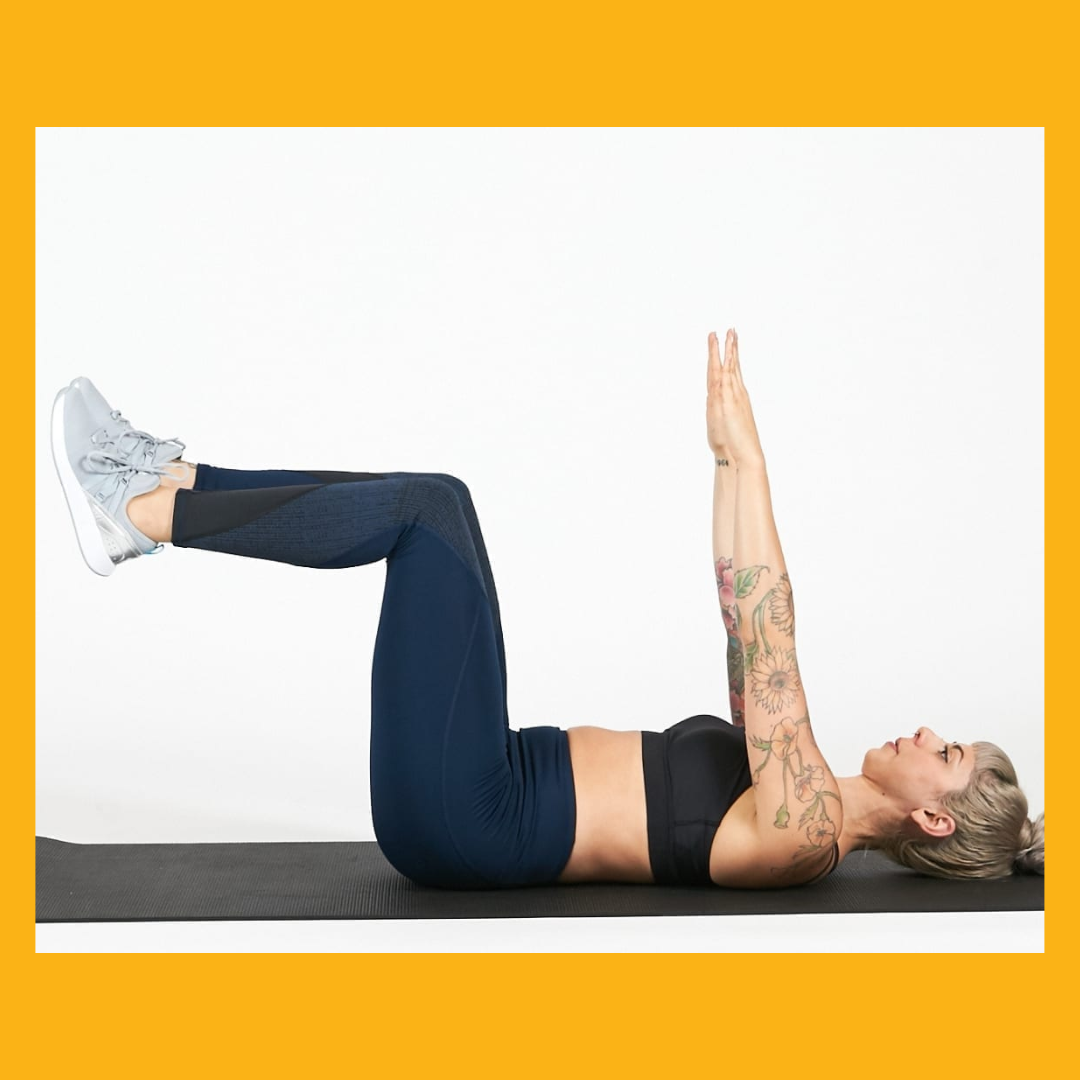Does Running Build Muscle? Demystifying the Debate

Running, an age-old form of exercise, has been a favored method for those seeking cardiovascular health, weight loss, and mental wellness. A common question among fitness enthusiasts, however, is whether running also serves as an effective method for building muscle. Let’s delve into the interplay between running and muscle growth hence Running Build Muscle is still a big Question. Let’s Solve this!
Also, read The Essential Need For Iron Supplements In Women
Basic Muscle Physiology Behind Running Build Muscle
At its core, muscle growth, or hypertrophy, occurs when muscle fibers experience damage from exercises, repair themselves, and grow thicker and stronger in the process. Two primary factors influence this:
- Resistance: Typically associated with weightlifting, resistance creates small tears in the muscle fibers. As these tears repair, the muscles grow.
- Endurance: This refers to the muscle’s ability to perform over prolonged periods. While endurance training can lead to some muscle growth, it primarily increases the muscle’s stamina.
Types of Running and Their Impact on Muscles
Impact on Muscle Development is More than Just Cardio
- Sprinting:
- Fast-twitch muscle fibers: These fibers are responsible for explosive, short-duration activities. Sprinting predominantly activates them.
- Muscle Growth with Sprinting: Due to the explosive nature of sprinting, it engages and builds the leg muscles, such as the quadriceps and hamstrings.
- Distance Running:
- Slow-twitch muscle fibers: These fibers are geared towards endurance and are primarily engaged during long-distance running.
- Endurance vs. Growth: While distance running enhances muscle endurance, it’s not the most effective way to increase muscle size.
- Hill Running:
- Added Resistance: The upward climb adds a resistance element to running, making muscles work harder.
- Muscular Benefits: Running uphill engages the glutes, hamstrings, and calves more than flat running, potentially aiding in their development.
Factors That Influence Running Build Muscle
- Nutrition:
- Protein and Recovery: Adequate protein intake is crucial for muscle repair and growth after a run.
- Carbohydrates: They are the primary fuel for long-distance runs, ensuring the body doesn’t use muscle for energy.
- Rest and Recovery:
- Importance: Muscles grow during rest periods, not while exercising. Hence, allowing them to recover post-run is essential.
- Overtraining: Without proper rest, muscles can’t repair effectively, hindering growth and increasing injury risk.
- Cross-Training:
- Strength Training: Incorporating weights can help in building muscle mass that running alone might not achieve.
- Balanced Workout: It ensures that all muscle groups are adequately engaged and developed.
Potential Drawbacks and Limitations

Potential Drawbacks and Limitations
- Muscle Imbalance: Focusing solely on running might lead to overdeveloped leg muscles compared to upper body muscles.
- Risk of Injury:
- Proper Form: Like all exercises, proper running technique is crucial to prevent injury.
- Common Injuries: Shin splints, runner’s knee, and ankle sprains can hinder one’s ability to run and, by extension, their muscle-building potential.
- Caloric Deficit:
- Burning Calories: Running, especially long distances, can burn significant calories.
- Muscle Loss Risk: If one doesn’t consume enough calories, the body might start breaking down muscle for energy.
Running does have the potential Running Build Muscle, especially in specific forms like sprinting and hill running. However, its muscle-building capability might not be as pronounced as weightlifting. For those looking to build muscle through running, a comprehensive approach that includes proper nutrition, rest, and supplementary strength training is essential.
Recommendations
For those eyeing muscle growth via Running Build Muscle
- Holistic Approach: Ensure a balance between running and other forms of exercise to prevent muscle imbalance.
- Nutrition: Consume adequate protein and calories to fuel your runs and muscle recovery.
- Strength Training: Incorporate it at least twice a week to supplement muscle growth.
- Rest: Prioritize recovery as much as the run itself to provide muscles the opportunity to grow.
In essence, while running might not be the quickest route to muscle bulk, with the right approach, it can certainly be a path to a stronger, more muscular physique.
Different Approaches to Running Build Muscle
While the debate on running’s efficacy for muscle building continues, one can tailor their running regimen to better suit muscle development goals:
- Interval Training: Incorporate short bursts of high-intensity sprints with periods of rest or low-intensity running. This engages the fast-twitch muscle fibers, stimulating growth, particularly in the calves, quads, and hamstrings.
- Fartlek Training: A less structured form of interval training, Fartlek (a Swedish term meaning “speed play”) involves varying one’s speed throughout a run. This combination of endurance and speed work can offer a mix of muscle endurance and muscle-building benefits.
- Tempo Runs: These are sustained runs at a challenging, but not all-out pace. They strengthen the heart and improve the muscles’ ability to handle lactic acid, potentially leading to toned, firm muscles over time.
- Stair Climbing: Regularly running up stairs or bleachers can add significant resistance, much like hill running, and can be especially effective for engaging the glutes and calves.
Other Considerations for Effective Muscle Building
- Shoe Choice: Wearing the right shoes is not just vital for injury prevention but also for ensuring efficient muscle engagement. Shoes with proper support and fit can enhance the muscle-building benefits of your run.
- Running Surface: Different surfaces offer varied challenges. Trail running, with its uneven surfaces, can engage different muscles than running on a flat track or treadmill.
- Posture and Form: Running with an upright posture and efficient stride can optimize muscle engagement. Moreover, focusing on engaging the core can help in building abdominal muscles over time.
Broader Benefits Of Running Build Muscle
While Running Build Muscle Potential running is an area of interest for many, it’s essential to remember the broader benefits of this exercise:
- Cardiovascular Health: Running is incredibly beneficial for the heart and lungs, improving overall cardiovascular endurance.
- Mental Health: Regular running can alleviate symptoms of depression and anxiety, offering mental clarity and a sense of achievement.
- Weight Management: Running is an effective calorie burner, assisting in weight loss or maintenance when combined with a balanced diet.

Broader Benefits Of Running Build Muscle
Running Build Muscle, with its multifaceted benefits, remains a cornerstone of fitness. While it may not be the primary choice for those seeking significant muscle hypertrophy, it can undoubtedly contribute to leaner, stronger muscles when incorporated strategically with other forms of exercise. It’s a testament to the age-old wisdom: it’s not just about what you do, but how you do it.
Final Recommendations on Running Build Muscle
For holistic health and balanced muscle development:
- Vary Your Training: Mix different forms of running and include strength training sessions.
- Stay Informed: Always keep abreast of new research and techniques in running and muscle development.
- Consult Professionals: Consider hiring a personal trainer or joining a running club to gain insights tailored to your specific needs.
- Listen to Your Body: The body’s feedback is invaluable. Adjust your routines based on how your body responds to avoid injury and maximize benefits.
With the right approach, passion, and dedication, running can indeed be an avenue to both cardiovascular excellence and muscular strength and Running Build Muscle is somehow true.
Myths and Misconceptions about Running Build Muscle
When it comes to Does Running Build Muscle? Several myths pervade fitness circles. Addressing them can help one navigate their fitness journey more effectively.
- “Running Decreases Muscle Mass”: While prolonged, intense endurance running without adequate nutrition can lead to muscle loss, moderate running, especially when combined with strength training, can support muscle growth.
- “Runners Don’t Need Strength Training”: Some believe that running alone is sufficient for overall fitness. However, strength training complements running by enhancing muscle tone, improving running efficiency, and reducing injury risk.
- “Running is Bad for the Knees”: With proper form, footwear, and training techniques, running can be safe for the knees. In fact, some studies suggest that running can increase bone density, benefiting joint health.
Tailoring Your Running Regimen to Your Unique Needs
Every individual is different. Factors like genetics, metabolism, and personal history play significant roles in how one’s body responds to running and muscle-building efforts hence Running Build Muscle.
- Personalized Training Plans: What works for one person might not work for another. It’s essential to develop a regimen tailored to one’s goals, whether it’s muscle growth, weight loss, or cardiovascular endurance.
- Genetic Testing: Recent advances in biotechnology offer insights into how one’s genes can influence their fitness and muscle growth potential. Some individuals are naturally predisposed to benefit more from endurance exercises, while others might see faster results from resistance training.
- Feedback Loop: Regularly assess your progress. Are you gaining the muscle definition you desire? Is your endurance improving? Use this feedback to tweak your routine.
Running Build Muscle -The Community Aspect
Beyond individual pursuits, running fosters a sense of community. Joining running groups or participating in marathons can offer:
- Motivation: Being part of a group can push individuals to stay consistent and challenge their limits.
- Learning: More experienced runners can offer insights, tips, and guidance.
- Social Benefits: Running groups provide a platform to form friendships, share experiences, and collectively celebrate milestones.
The Future of Running and Muscle Building
With continual research in sports science, our understanding of the relationship between Does Running Build is bound to evolve. Future trends may include
- Technological Integration: Wearables that monitor muscle engagement and growth potential during runs can offer real-time feedback to optimize routines.
- Virtual Reality: VR-guided runs, which simulate varying terrains and challenges, could offer new avenues for muscle engagement.
- Dietary Innovations: As we gain a deeper understanding of nutrition, specialized diets tailored to runners seeking muscle growth might become mainstream.
Wrapping Up
While the debate around Does Running Build Muscle will persist, one thing remains clear: When done right, running can be a powerful tool in one’s fitness arsenal. Whether you’re a seasoned athlete or a beginner embarking on your fitness journey, a balanced, informed, and passionate approach to running can pave the way to a healthier, more muscular physique. Embrace the journey, enjoy every stride, and remember to find joy in every milestone achieved.
Running Build Muscle- Beyond the Physical: The Psychological Benefits
Running isn’t merely a physical endeavor. The mental and psychological benefits are just as pronounced, if not more.
- Mental Resilience: Long-distance runs, especially, teach persistence and endurance, traits that translate well into daily life challenges.
- Meditative Quality: The rhythmic pattern of running often puts runners in a meditative state, helping reduce stress and clear the mind.
- Endorphin Release: Running triggers the release of endorphins, the body’s natural mood elevators. This is often referred to as the “runner’s high,” which is why many people find running addictive.
The Environmental Impact and Responsible Running
As we become more conscious of our environment, it’s worth considering the ecological footprint of our running habits.
- Sustainable Gear: Opt for running shoes and clothing made from sustainable materials. Brands are increasingly acknowledging the need for eco-friendly products, with some even offering recyclable shoes.
- Local Runs: Instead of driving to distant locations for a run, explore local trails or parks. This reduces carbon emissions and introduces runners to the beauty of their local surroundings.
- Event Sustainability: For those participating in marathons or running events, consider the environmental practices of the organizers. Are they minimizing waste? Do they promote recycling and responsible consumption?
Adapting to Life Changes: Running through Different Life Stages
Life is constantly evolving, and so is our relationship with running. this is beyond Running Build Muscle.
- Running during Pregnancy: Many women continue to run during pregnancy, albeit with modifications. It’s always essential to consult with a healthcare professional and listen to one’s body.
- Running in Older Age: As we age, our joints and muscles face more wear and tear. Adapting running routines, prioritizing warm-ups, and perhaps shortening distances can ensure that one can continue running well into their later years.
- Running post-Injury: Injuries can be daunting, especially for avid runners. The road to recovery should be gradual, with a focus on rehabilitation and ensuring the injury doesn’t recur.
Inculcating a Running Habit in the Next Generation
With the digital age and the rise of screen time, encouraging younger generations to adopt running can be beneficial.
- Family Runs: Make it a weekend ritual. This not only promotes fitness but also strengthens familial bonds.
- Educate on Benefits: Rather than mandating it, educate children on the fun and benefits of running.
- Participation in School Events: Encourage children to participate in school marathons or athletics. It fosters a competitive spirit and highlights the joys of physical achievement.
Final Thoughts on Running Build Muscle
The journey of running is personal, unique, and ever-evolving. It’s more than just a means to an end, whether that end is muscle building, weight loss, or cardiovascular health. Running is a celebration of human endurance, spirit, and our timeless connection with movement. As you lace up your shoes and hit the trail, remember that every step is a step towards a healthier, more connected, and enriched self. Happy running!
- Water Intake Calculator: Everything You Need to Know - September 7, 2024
- 5 Weight Gain Drink Recipes for Healthy Bulking - March 29, 2024
- High-Calorie Banana Shake for Weight Gain - March 27, 2024









